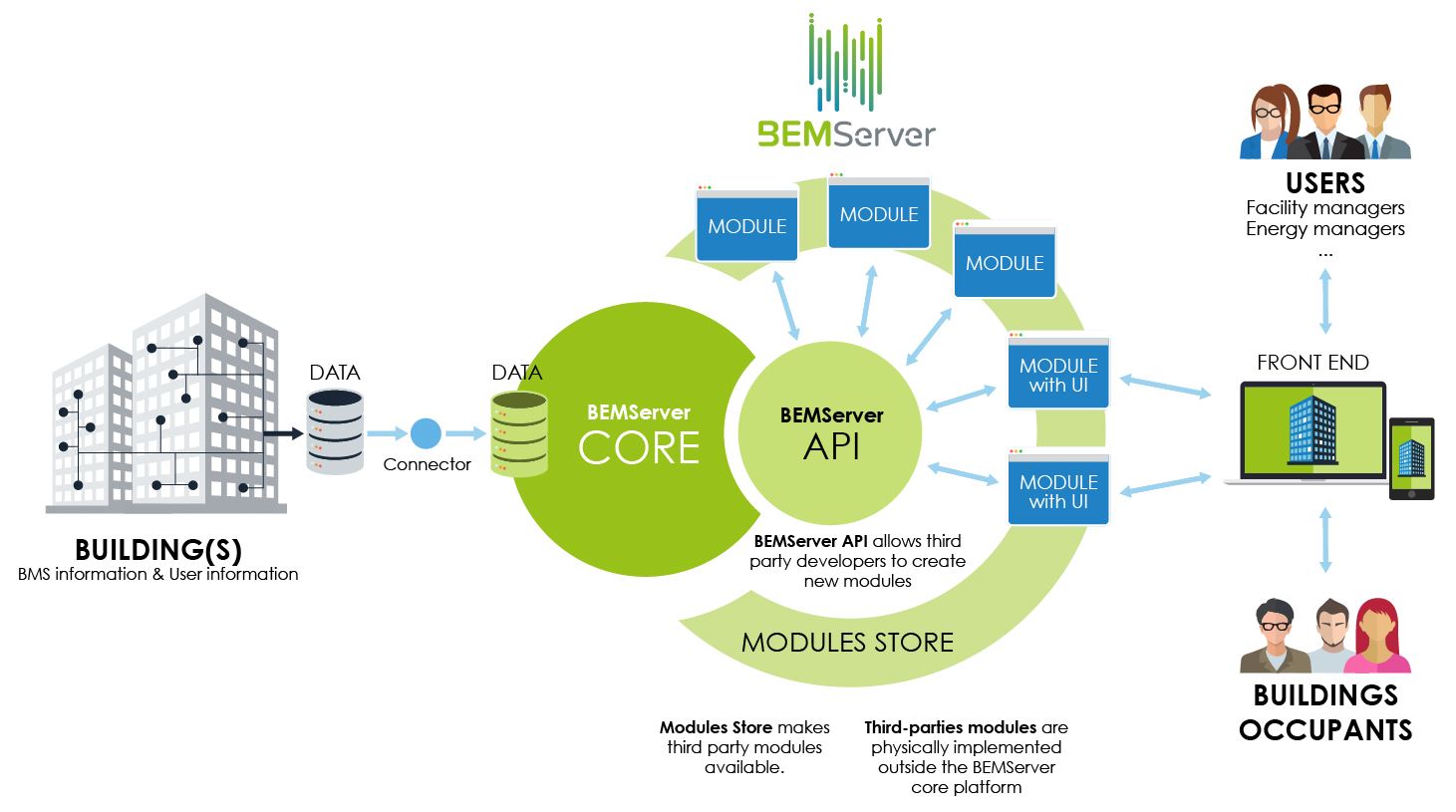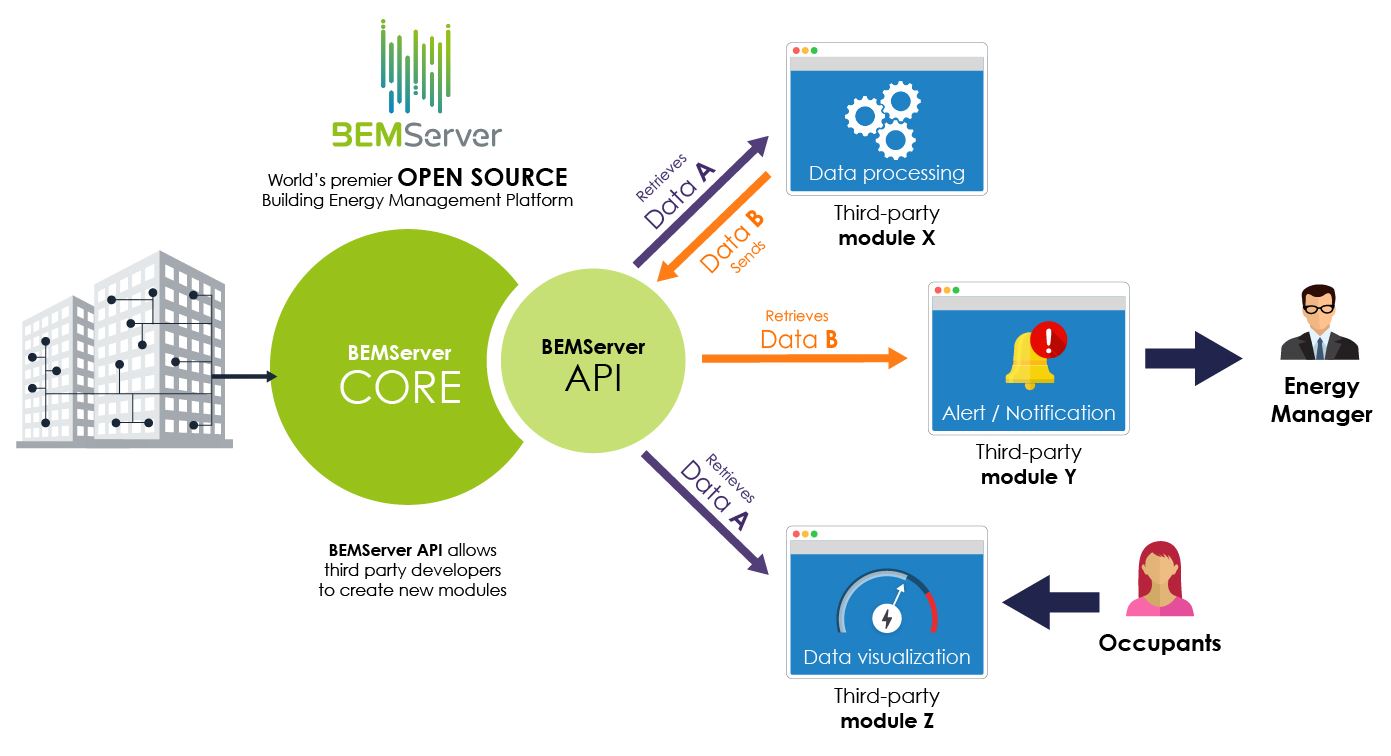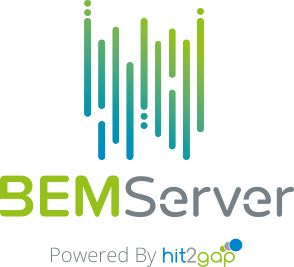How does it work
The emergence of the smart building concept transforms the needs expressed by building owners, managers and occupants. BEMServer is a solution to transform your monitored building into a platform of services.
In the essence, BEMServer is a building data aggregator and acts as a gateway between the hardware level of a building (sensors, BMS…) and the data-oriented services.
By design, BEMServer is modular and interoperable and includes:
- a connectivity module allowing agile data collection from the field level of a building (sensors infrastructure, Building Management System),
- a management middleware ensuring a coherent information platform by providing a semantic interoperability (through the use of formal ontologies) to unify and normalize the data between all the components of the platform,
- several advanced data processing modules based on data mining techniques and energy management approach to interpret data and identify issues or non-optimised functioning, and to deliver recommendations and decision support,
- information display modules targeting different typologies of end-users and needs and presenting key results in a user-friendly manner, tailored for these various audiences.

The core of BEMServer uses the most advanced web technologies and well-accepted standards such as REST APIs to facilitate as much as possible the integration of new modules. The overall BEMServer is fully in line with various national recommendations and labels like the French Ready2Services label.

One of the main added value of BEMServer is the ability for the third-party modules to communicate which each other through its API.
That schema illustrates the possibility of two modules working together it also shows that the same data can be used by two different modules for different needs :
- The Module X, a module that runs in background for example, detects and fetches the Data (A) from the BEMServer. Once the processing of the data by the Module X is done, it creates new data (B) and sends it to the BEMServer.
- Finally, the module Y, a module aimed at helping the Facility Manager in his day to day tasks, detects the presence of the Data (B) and fetches its content. After an automatic analysis of the data, it triggers an alert for the Energy Manager (that alert can be displayed in the module interface, or send by mail or SMS for example).
- Another module, Z, allows the building occupants to view the Data (A) in a visual way (for example : the data can be :
– power consumption
– heat consumption
– indoor/outdoor temperatures



